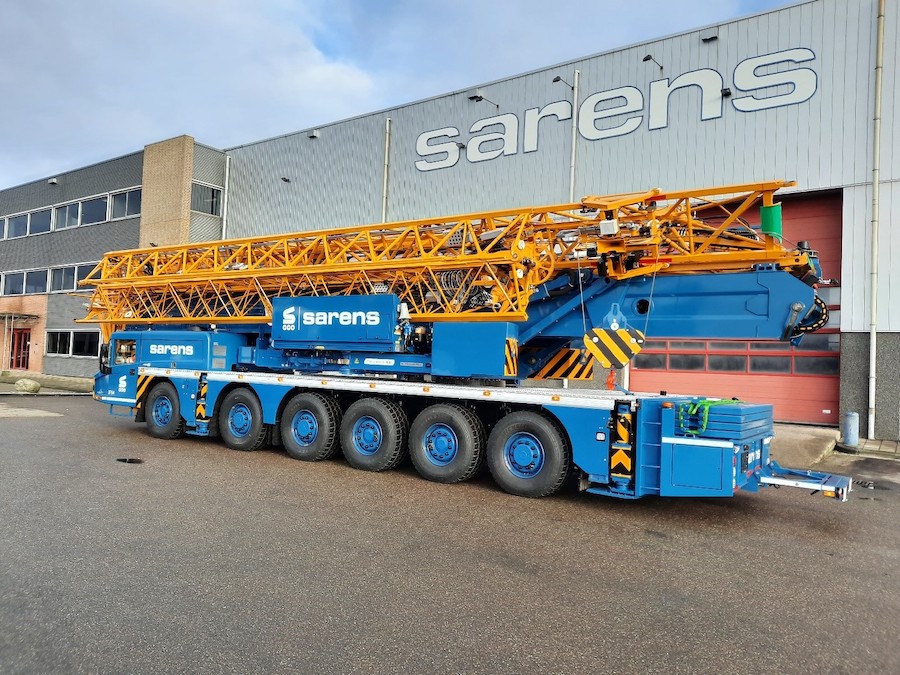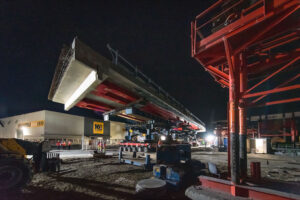Sarens took delivery of the first Spierings battery-powered hybrid mobile tower crane out of an order of six – three SK1265-AT6 eLift cranes and three SK597-AT4 eLift cranes.The first crane to be delivered was the SK1265-AT6 eLift which got Sarens fleet number K9794. This 6-axle mobile tower crane that has a gross vehicle weight of 72T, has a maximum lifting capacity of 10T and lifts 1,7T at 60m radius. The tower can be extended to 27m or 36,8m elevation. The 60m long jib can be luffed to 30° from horizontal for reaching a maximum hook height at 66,2m elevation and 52,2m radius. The crane carries all its counterweight and has its load spreading mats stowed at the back of the crane. On the road the crane is powered by a DAF 390kW diesel Euro 6 engine.
On the jobsite however, the Spierings eLift cranes can work on electricity in full speed and capacity. The battery pack in the superstructure delivers 33kWh and allows for three hours of operation off the grid. By connecting onto a 16A or 32A grid, the batteries can be continuously charged, so zero-emission crane operation can be performed all day.
Electric connection is done by a 30m long extension lead fitted with red colored CE plugs 3P+N+E 32A / 415V. The electric connection box can be found at the rear of the crane. Due to the integrated battery pack, peaks in energy consumption can be mediated. When the crane is not being operated for some time, the hydraulic pumps will shut off reducing the energy consumption. Meanwhile the battery remains charged, making it possible to operate on only a low power grid connection that can be found on almost every construction site. In the case no grid connection is available at all, the crane can also work in hybrid mode where a small 3-cylinder Stage 5 diesel engine together with the battery pack will supply the crane with the required power.
The operator can choose the current that is extracted from the grid connection within the range of 1 – 32 Amp. When there are other electrical consumers plugged-in, the operator can choose for a lower current while, due to the batteries, the crane will still be able to work at 100% capacity and speed. For setting up the crane, the crane needs to be set on short outriggers 7,95m x 5,72m first, for positioning of the mats by use of the auxiliary arm through remote control. The crane self-erects – extending of the tower, and unfolding of the jib – by pressing one button on the remote control. In precise 11 minutes after the crane is set on its outriggers, it is ready for operation.






